James M. Beggs served as NASA’s sixth administrator between 1981 and 1986 during President Ronald W. Reagan’s administration. During his tenure, the space shuttle completed its orbital flight test program and began to deliver, repair, and retrieve satellites, conduct scientific missions, and support U.S. military space activities. The space shuttle fleet grew from one to four orbiters during his time in office. As administrator, Beggs helped to convince President Reagan to approve the space station as a new project, the forerunner of today’s International Space Station. He oversaw early designs for the orbiting facility and negotiated with America’s allies to join the program. He also supported NASA’s science programs, including the Hubble Space Telescope. Beggs formally resigned as administrator in February 1986 following a brief leave of absence.
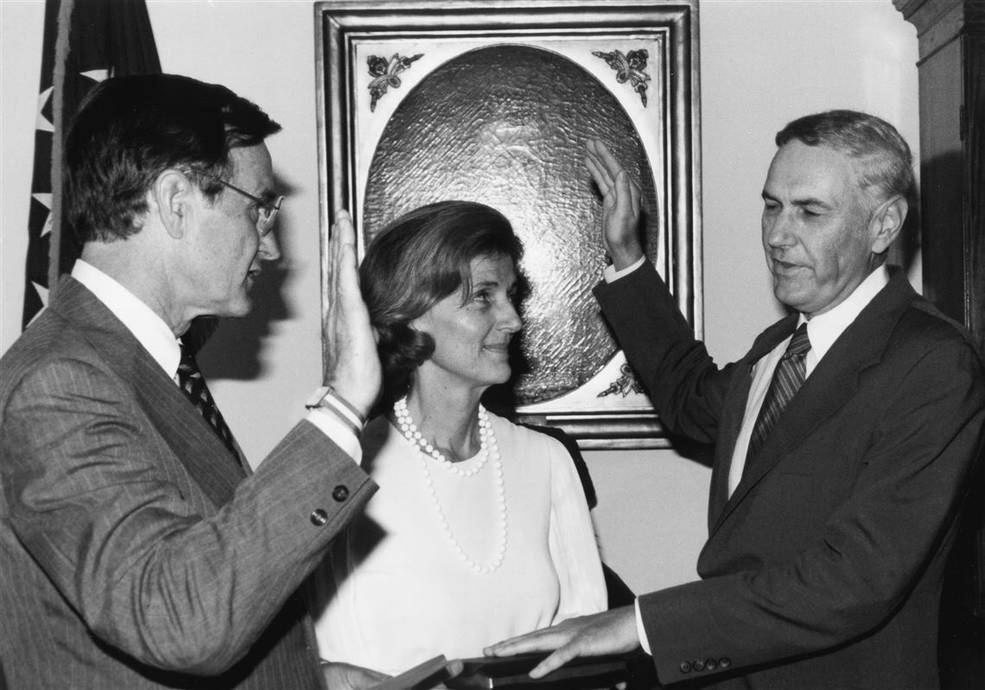
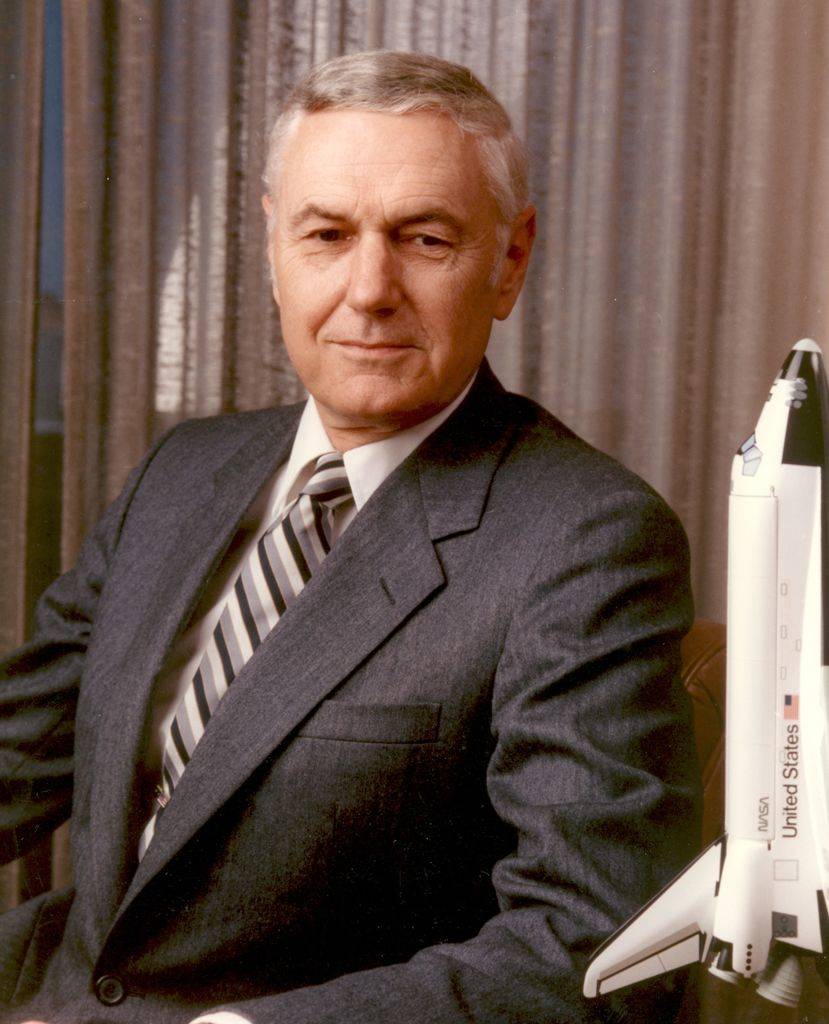
Left: Vice President George H.W. Bush, left, swears in James M. Beggs, right,
as NASA’s sixth administrator as his wife Mary looks on. Right: Official
NASA portrait of Administrator Beggs.
President Reagan nominated Beggs on April 23, 1981. He was serving as executive vice president at General Dynamics in St. Louis, Missouri, at the time and had previously served as NASA’s associate administrator for the Office of Advanced Research and Technology between 1968 and 1969. Following confirmation by the Senate on June 25, Vice President George H.W. Bush swore him in and Beggs took office on July 10. He succeeded acting NASA Administrator Alan M. Lovelace, who left the agency in January 1981 to return to the private sector. During Beggs’ tenure, the space shuttle Columbia completed the final three of the four orbital flight tests and began to deliver satellites to orbit, repair and retrieve disabled satellites, and serve as a platform for scientific missions such as Spacelab. Space shuttle orbiters Challenger, Discovery, and Atlantis joined Columbia to round out the fleet.
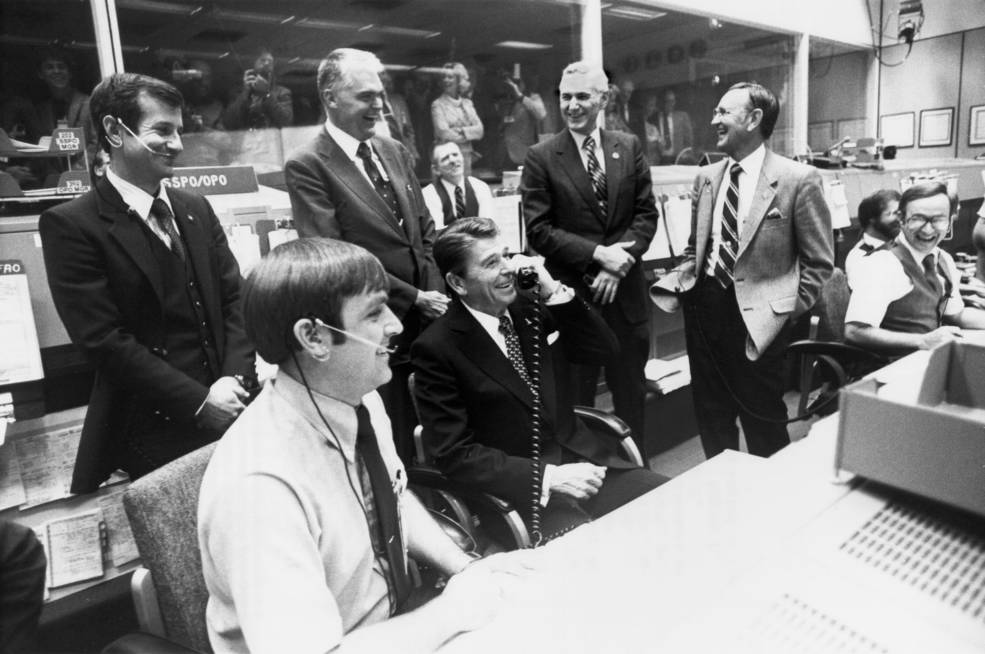
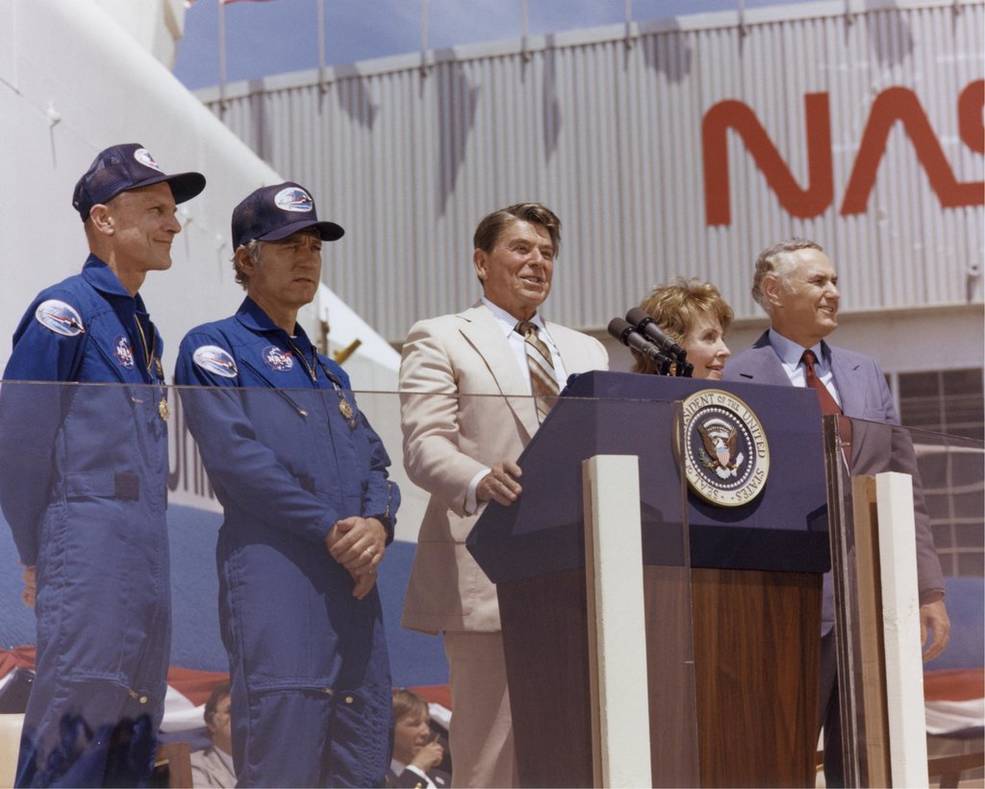
Left: In the Mission Control Center at NASA’s Johnson Space Center in Houston,
NASA Administrator James M. Beggs, second from right, looks on as President
Ronald W. Reagan, seated in dark suit, talks to the STS-2 crew in November
1981. Right: Administrator Beggs, far right, with STS-4 astronauts Thomas
K. “TK” Mattingly, left, and Henry W. “Hank” Hartsfield and President and
Mrs. Reagan at NASA’s Dryden Flight Research Center, now NASA’s
Armstrong Flight Research Center, following the landing of STS-4.
During his Jan. 25, 1984 State of the Union message, President Reagan directed NASA to build a permanently occupied Earth-orbiting space station. As administrator, Beggs was instrumental in convincing President Reagan to approve the space station as a new project. Following the announcement, he oversaw the initial designs for what later became Space Station Freedom and ultimately today’s International Space Station, and negotiated with America’s allies to join the program. In the area of space science, Beggs oversaw the development of several large projects, including the Hubble Space Telescope, an instrument he once described as the eighth wonder of the world.
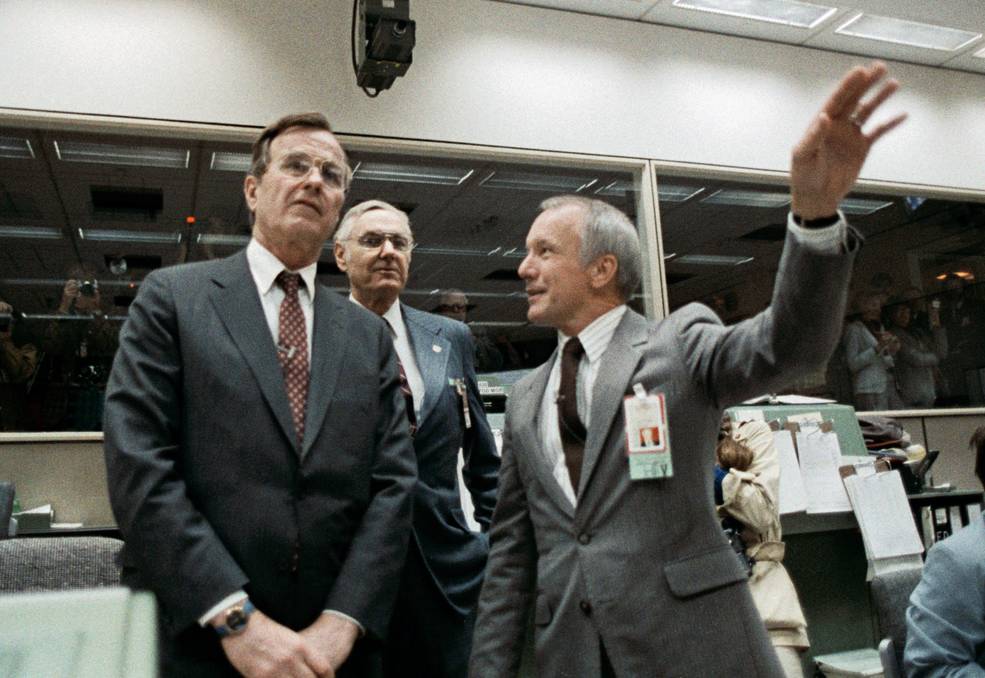
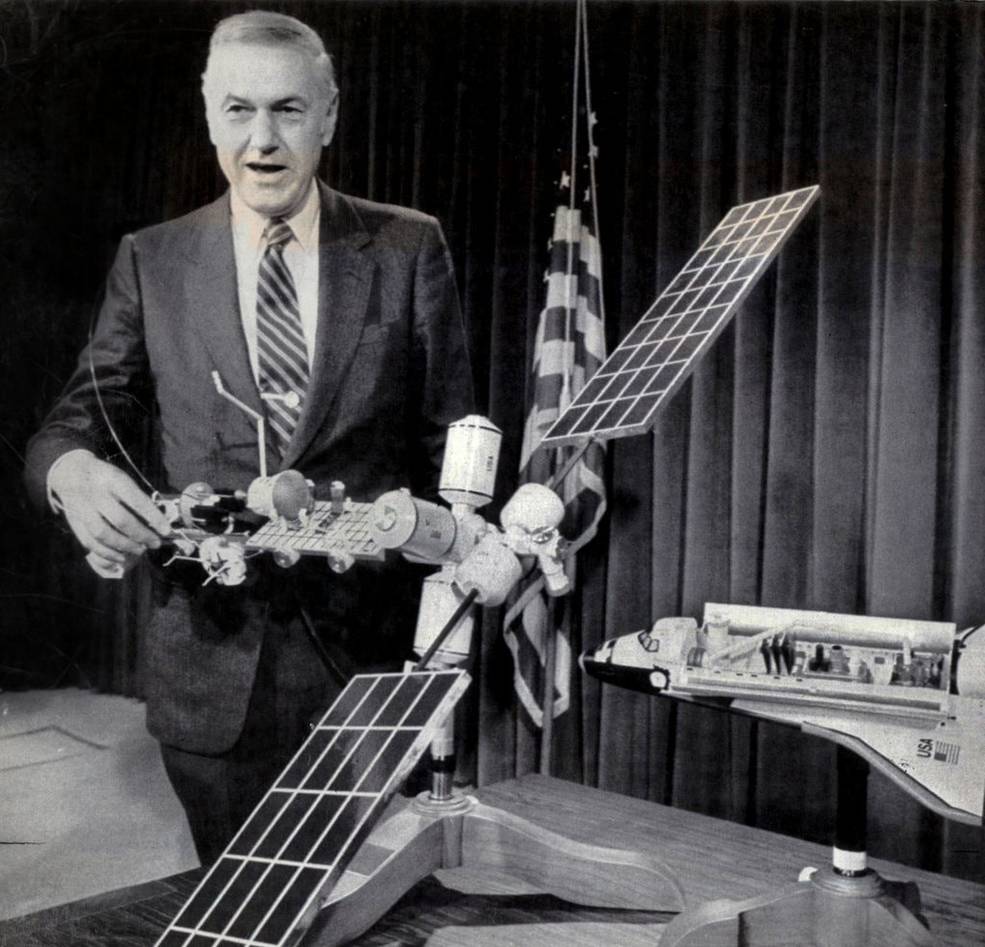
Left: In the Mission Control Center at NASA’s Johnson Space Center (JSC)
during the STS-6 mission in April 1983, NASA Administrator James M. Beggs,
center, accompanies Vice President George H.W. Bush as JSC Director
Gerald D. Griffin describes the facility. Right: Administrator
Beggs with an early model of the space station in 1984.
On Dec. 4, 1985, Beggs took an indefinite leave of absence from NASA pending disposition of an indictment from the Justice Department for activities predating his tenure as administrator. The Justice Department dismissed the indictment in June 1987 and U.S. Attorney General Edwin Meese apologized to Beggs for any embarrassment. Deputy Administrator William R. Graham served as acting administrator until the swearing in of James C. Fletcher as NASA’s seventh administrator in May 1986. Beggs formally resigned from NASA effective Feb. 25, 1986, one month after the Challenger accident. He passed away on April 23, 2020.


























